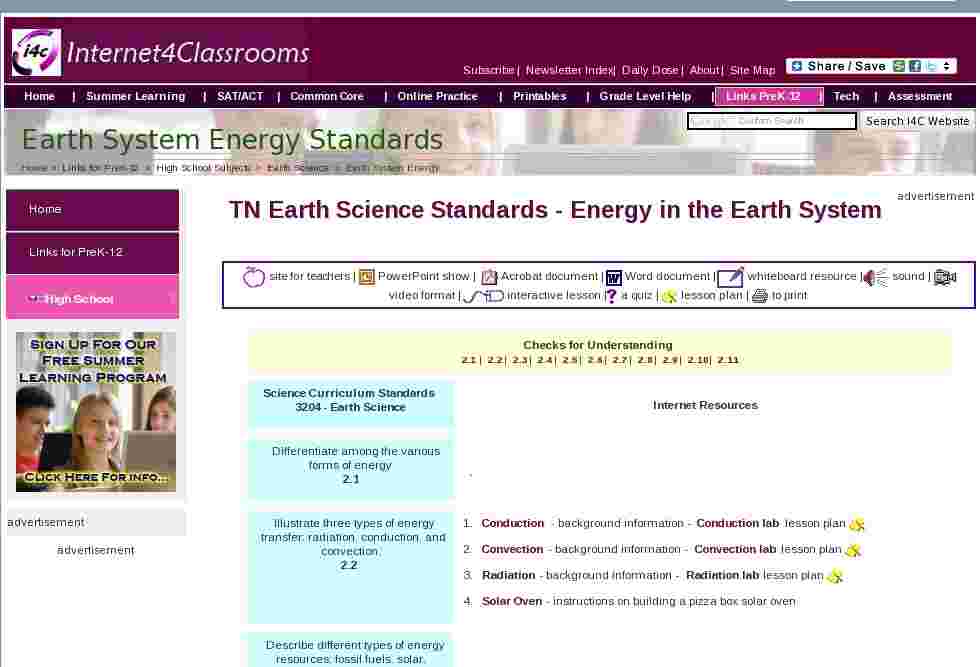TN Earth Science Standards - Energy in the Earth System
Date last edited 6/30/2017
site for teachers |
PowerPoint show |
Acrobat document |
Word document |
whiteboard resource |
sound |
video format |
interactive lesson |
a quiz |
lesson plan |
to print
Science Curriculum Standards
3204 - Earth Science
- Conduction - background information - Conduction lab lesson plan
- Convection - background information - Convection lab lesson plan

- Radiation - background information - Radiation lab lesson plan
- Solar Oven - instructions on building a pizza box solar oven
- How Geothermal Energy Works - a guide to teach communities the importance of the geothermal energy system
- Animation showing how coal (nonrenewable) forms
or
- Classify Resources - Click on Resource ID in the yellow Activities box to take a quiz.
- Energy Kids - energy facts about various forms of renewable and nonrenewable energy sources
- Flex Your Power - an interactive quiz in the format of a game show
- National Renewable Energy Laboratory
- Natural Resources - Can We Use Them Forever?
- Renewable and Nonrenewable Resources - a twenty question quiz written by Kathy Tucker
- Renewable Energy Fact Sheets - there is a section of fact sheets for kids and one for adults
- Renewable Energy Sources and the Environment - thirteen multiple choice questions
- Renewable Energy Policy Project - from the Center for Renewable Energy and Sustainable Technology
- Renewable Energy vs. Fossil Fuels - Suggestion: create a Pro and Con list for each energy source. That will give you a a way to compare the various energy resources.
Renewable Energy Web Links - from the Texas Solar Energy Society (their slogan is "The Solution Comes Up Every Morning!").
Renewable Resources in Saskatchewan - a long set of web links to use with the topic
- Conservation of Energy - this HyperPhysics explanation is on a page which explain several conservation laws
- The Law of Conservation of Energy - this ThinkQuest page uses a pendulum and colored dots to explain energy transformation
- The Law of Conservation of Energy - short video to illustrate the law [1:01]
- The Law of Conservation of Energy - with the explanation this page has a short table showing types of energy transformations
- The Secret Lives of Energy: Conservation of Energy - scroll down near the bottom, there is an excellent animated image which shows several types of energy changing while total energy remains constant.

Search Internet4Classrooms
 Custom Search
Custom Search
- Site Map |
- About Us |
- Teacher Training |
- Make Internet4Classrooms.com your home page. |
- Copyright © 2000-2024 Internet4Classrooms, LLC All rights reserved.
Use of this Web site constitutes acceptance of our Terms of Service and Privacy Policy.
1764988072649512 US 1 desktop not tablet not iPad device-width